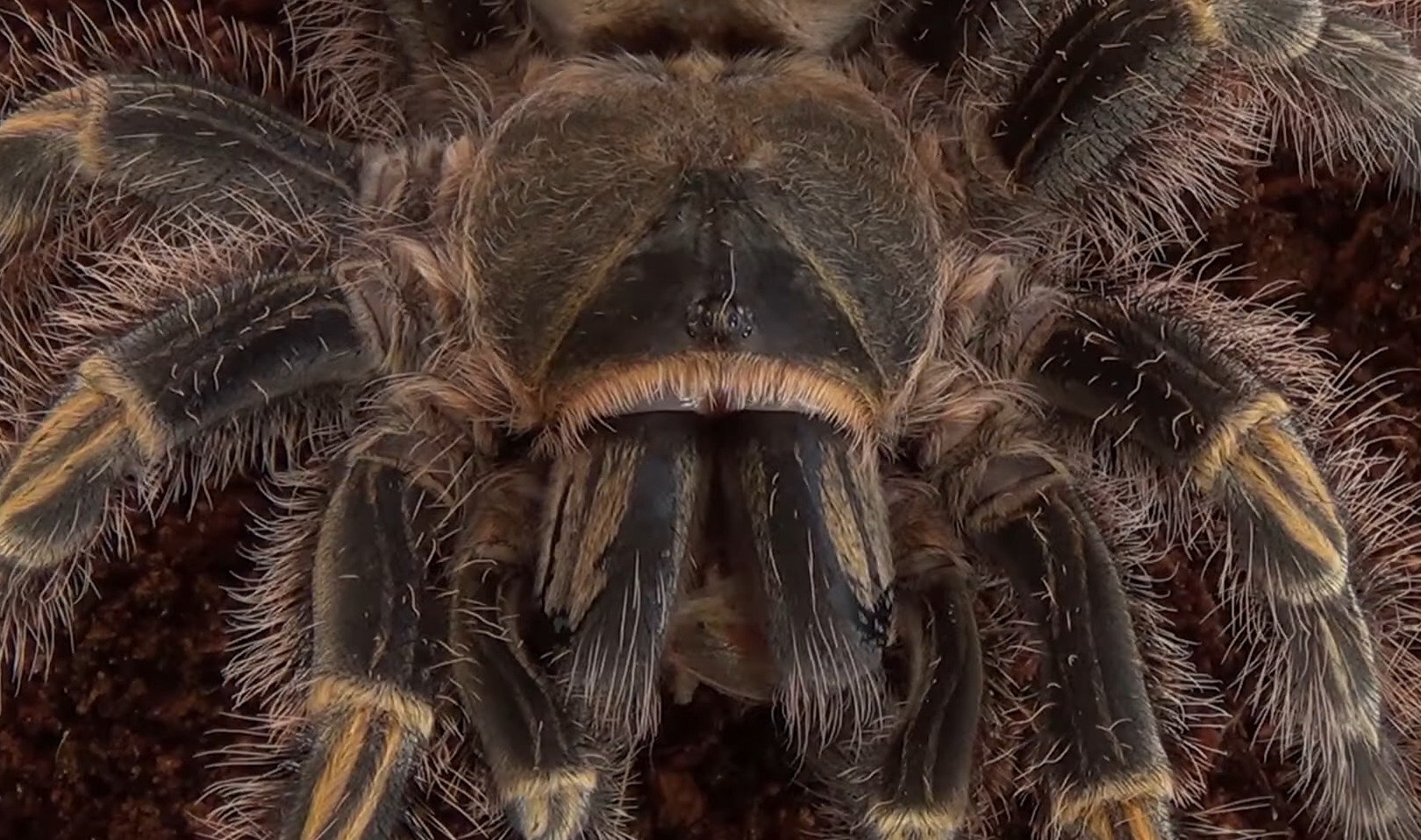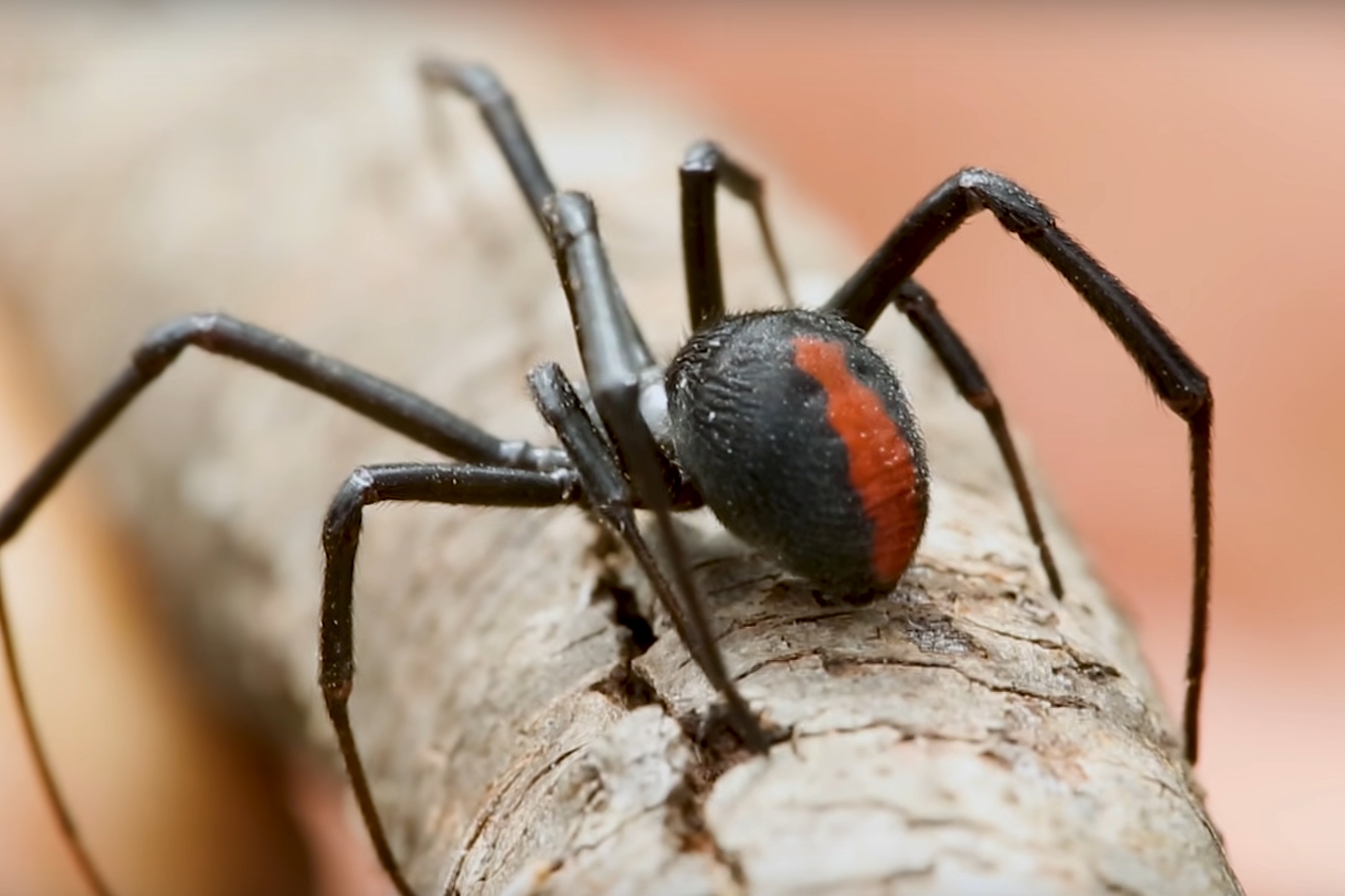If you’re afraid of spiders, you’re not going to like this blog post. We’re going to take a look at the most giant spiders found in the UK. Some of them can be pretty frightening! If you’re brave enough, keep reading. We’ll discuss the different types of spiders that can be found in the UK and their size and appearance.
UK spiders you’re likely to find in your home and garden:
Daddy Long Legs or Cellar Spiders
Contents
Daddy Long Legs spiders, also known as Cellar Spiders, are some of the most common spiders found in the UK. They get their name from their long legs, which can be up to twice the length of their body. These spiders are harmless to humans and will usually run away if they feel threatened.
False Widow Spider
The False Widow Spider is the most venomous spider in the UK. It is a tiny, black spider with a distinctive cream-colored marking on its abdomen. The False Widow Spider has a bite that can cause severe pain, swelling, and nausea. In some cases, it can also be fatal.
Cupboard Spider
The cupboard spider is a common, tiny spider found in the UK. It is usually light brown or beige and has a round body and long legs. Cupboard spiders are harmless to humans and typically build their webs in the dark, secluded areas such as cupboards, closets, and attics.
Lace Web Spider
The Lace Web Spider is a common spider found throughout the UK. It has a brown body and a distinctive web made of fine white silk. The spider can be up to 12mm in size.
Zebra Spider
The Zebra Spider is a common spider found in the UK. It gets its name from the black and white stripes on its body. The Zebra Spider is not considered dangerous, but it can bite if it feels threatened.
Cardinal Spider
The cardinal spider is one of the most enormous spiders found in the UK. It can grow up to 10cm long and has a leg span of 20-25cm, which makes it bigger than most people’s hands! The female is usually more significant than the male. Females are also more aggressive with their prey – they will attack anything that moves near them, whereas males prefer to wait for an insect to come close before attacking. They are not poisonous, but they have large fangs to pierce human skin, so they should be handled carefully or avoided altogether! These spiders are active at night and hide during the day. They make funnel-shaped webs on grassy fields, hedge bottoms, woodland edges, and open spaces near streams where insects congregate.
Money Spider
A money spider is a type of spider that can create money. They are often seen as symbols of prosperity, and many people believe they bring good luck. These spiders are found worldwide, but mostly in China and other Asian countries. It is said that these spiders can come to life if you rub their back with your finger or hand three times while saying “money spider” nine times out loud. The Chinese word for “spider” sounds like “silver,” so some think this legend may have originated from an ancient belief that silver-colored spiders could produce silver thread used to make coins at that time. However, there is no evidence of any living creature’s existence being able to turn into anything else just by reciting a specific phrase.
Orb Weaver Spider
The Orb Weaver Spider is the most enormous spider found in the UK. It can grow up to 12 cm long, with a leg span of up to 20 cm. They are generally pale brown or grey and have distinctive black markings on their abdomens. These spiders build large webs between trees and bushes, which they use to catch prey.
Buzzing Spider
There are many different types of spiders found in the UK, but the one that tends to cause the most fear is the buzzing spider. This spider gets its name from its sound when it moves around. Unlike other spiders, which tend to hide in dark corners, the buzzing spider is often seen out in the open. It’s also one of the most enormous spiders found in the UK, with a body size of up to 1 inch long.
Cave Spider
Cave spiders are giant and hairy, but they’re not dangerous. They live in caves and rock shelters. Their webs catch other insects that fly into the cave or onto the shelter’s ceiling. Cave spiders don’t build their own webs; instead, they wait until another spider builds a trap and then steal it for themselves. These spiders can grow 8 inches long with a leg span of 1 foot! Luckily, these guys only come out at night, so you’ll never see them while exploring during the daytime.
Crab Spider
The crab spider is a common name given to spiders of the family Thomisidae. They are so named because of their crab-like appearance. Crab spiders are found worldwide and come in a variety of shapes and sizes, but they all have one thing in common: they wait for prey to come to them.
Cucumber Green Orb Spider
Cucumber Green Orb Spider is a spider native to the UK. It’s also known as the “Cucumber” or “Banana” spider. This name comes from their color and resemblance to these vegetables. The Cucumber Green Orb Spider is usually found in gardens, parks, woods, hedgerows, and other green areas. They’re often seen during summertime but can be seen throughout the year indoors too if they’ve been accidentally introduced inside by humans moving plants around, for example!
European Garden Spider
The European Garden Spider is a common spider found in the UK. It is also known as Tegenaria parietina, and it can grow to be about 4 centimeters long. That makes them one of the most giant spiders found in the UK. They are not venomous, but they will bite if provoked or threatened. Spiders like this live near areas where food sources exist, such as tall trees, hedges, and tall weeds. To find these types of habitats, you need to look at parks, gardens, backyards with high grasses or shrubs, for example, because those are usually reasonable breeding grounds for spiders like this one.
Green Huntsman Spider
The Green Huntsman Spider is a medium-sized spider that is more commonly found in the UK. It has a leg span of up to 14cm and is often encountered on windowsills, although it sometimes ventures indoors. The female will lay her eggs onto plants near water sources such as ponds, lakes, or puddles. They are relatively harmless but can bite if provoked or handled roughly. They have been known to eat other spiders, including Black House Spiders which may wander into their territory while looking for food.
Jumping Spider
The jumping spider is a species of spider found all over the world. They are known for their ability to jump great distances, and they are considered one of the most agile spiders in the world.
Running Crab Spider
The Running Crab Spider is a spider that is found in the UK. It gets its name from its crab-like running motion as it hunts for prey. The size of this spider ranges from 3 to 4 mm long. They are not considered dangerous, but they can deliver a bite that may cause an allergic reaction in some people. If you think you have encountered one of these spiders, do not try to kill or capture it yourself and contact your local pest control company for assistance on what action should be taken next.
Sector Spider or Missing Sector Orb Weaver
The Sector Spider is a giant spider found in the UK and known as the Missing Sector Orb Weaver. It has a leg span of up to 8 inches, with females larger than males. The body measures about 3/4 inches long with reddish-brown hair on its back and legs. This spider’s diet consists mainly of small insects that it hunts at night from silk “pup tents” it builds near ground level or under bark or logs during the day.
Cardinal Spider
The Cardinal Spider is a giant and harmless spider found in the UK. It has a glossy, dark brown body with lighter markings on it. In contrast to other spiders, this one does not live in webs or make any kind of silk. Instead, it hunts for prey during the day and rests hidden under stones at night. This is unusual behavior for spiders because they usually sleep by attaching themselves to their web and waiting for insects to get caught in them. The Cardinal Spider prefers dry habitats such as heaths and open spaces with low vegetation where its hunting ground is wide-open and easy to cover quickly while running around looking for food. Its diet consists mainly of beetles and includes grasshoppers, flies, ants, wasps, and bees.
Giant House Spider
The Giant House Spider is the most enormous spider found in the UK. It can grow up to 12 cm in length and has a leg span of 25 cm. They are typically brown or black in color, with a band of cream-colored fur down the center of their backs. These spiders are mostly harmless to humans, but they can give a nasty bite if provoked.
Labyrinth Spider
The labyrinth spider is a type of orb-weaver spider. It is found throughout the UK and is one of the most giant spiders. The labyrinth spider’s web is characteristically complex, and it often builds its web near or on buildings. This spider preys primarily on insects and eats small lizards and frogs.
Cellar Spider
Cellar spiders are named for their habit of living in dark, fantastic locations. They’re often found in cellars, garages, and other areas that have high humidity levels. These spiders are typically not aggressive but will bite if provoked or threatened. Cellar spider bites can be very painful and should be treated by a doctor immediately to avoid infection.
Cellar Spiders are about the size of an apple seed, with females being slightly larger than males. Their coloration is usually brownish-grey with hairs on the body, giving them the appearance of having short fur or hair, which provides them with another name, “Furry Jumper.” They lay eggs sacs containing up to 50 individual eggs that hatch after 3 weeks into miniature versions of the adults. Cellar spiders can live up to two years.
Four Spot Spider
The four-spot spider is one of the most common spiders found in the UK. They are often mistaken for a brown recluse, as they have similar markings and coloring. However, unlike the brown isolate, which possesses a highly nasty bite and can cause necrosis (die-off) of skin tissue and muscle around the bite site, this species only contains mild venom that will not harm humans or pets.
The four spot spider typically lives outdoors but maybe indoors if it has access to a crack or crevice leading outside, such as window frames or doorways. It prefers dark places with low humidity, such as basements, crawl spaces under homes, garages, and sheds; however, it is not uncommon for them to inhabit attics where there is an ample food supply. They are scavengers and feed mainly insects but consume other spiders, small lizards, and snakes.
What are the Biggest Spiders Found in the World?
Huntsman Spiders
Huntsman spiders are the largest of all types of spiders found in the UK. They can grow up to 10cm and have a length as wide as 12 cm. These giant, fast spiders live on many surfaces, including ceilings, walls, and webs. Huntsman Spiders prey on insects and other invertebrates such as snails, slugs, and earthworms.
Huntsman Spiders will often run away from humans, but they can bite if provoked or threatened. The good news is that their bites are not lethal to humans, but some people may experience pain for days after being bitten by one of these creatures.
The Goliath Birdeater
The Goliath Birdeater is the most giant spider in the world. It can weigh up to 6 ounces and have a leg span of 12 inches. This spider is found in the jungles of South America.
Brazilian Salmon Pink Bird-Eating Tarantula
The Brazilian Salmon Pink Bird-Eating Tarantula is a giant spider found in the rainforest of Brazil. This tarantula can grow up to 10 inches wide and has a pinkish hue to its fur. The Brazilian Salmon Pink Bird-Eating Tarantula is one of the most enormous spiders globally and is known for its voracious appetite for birds.



